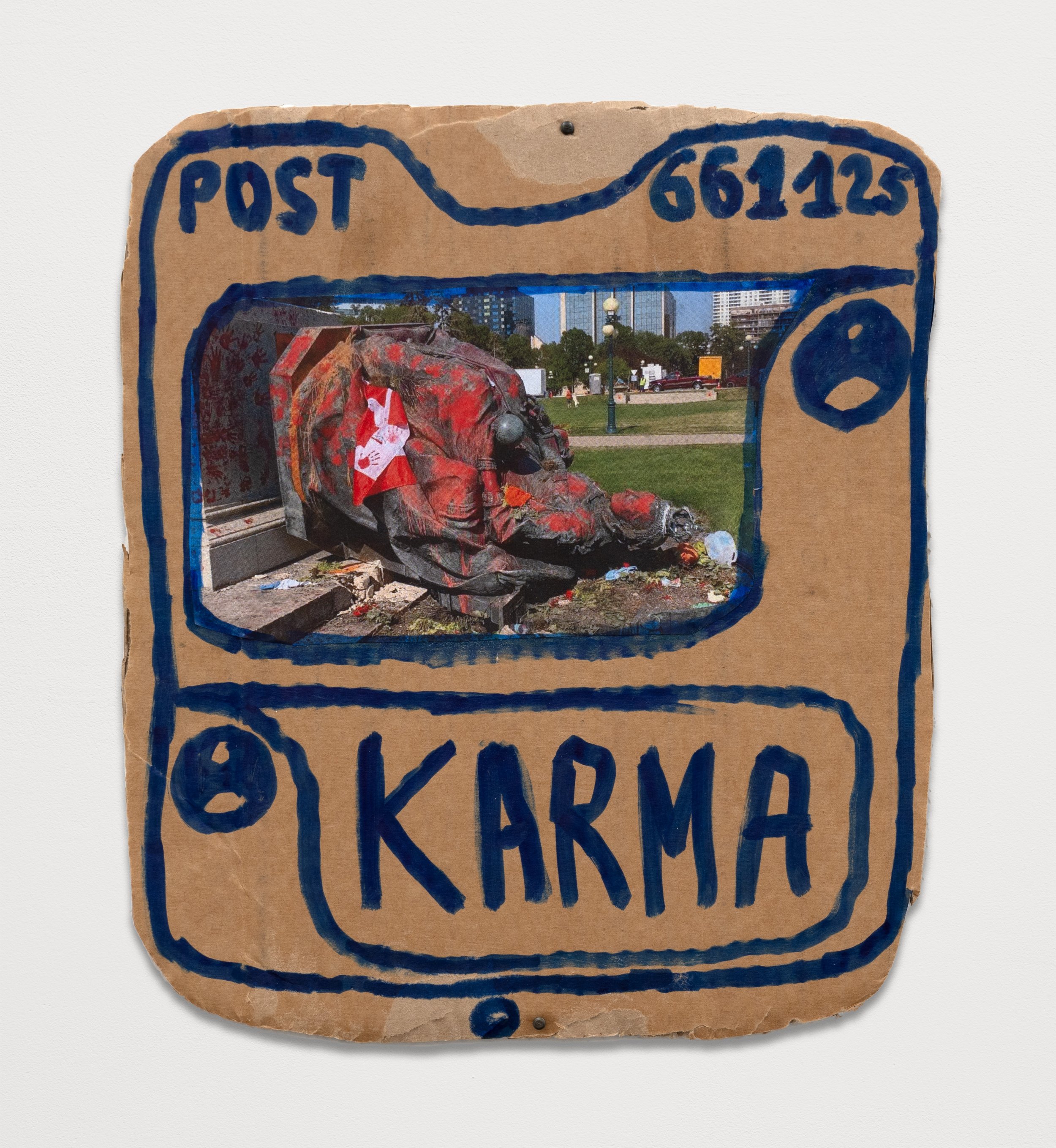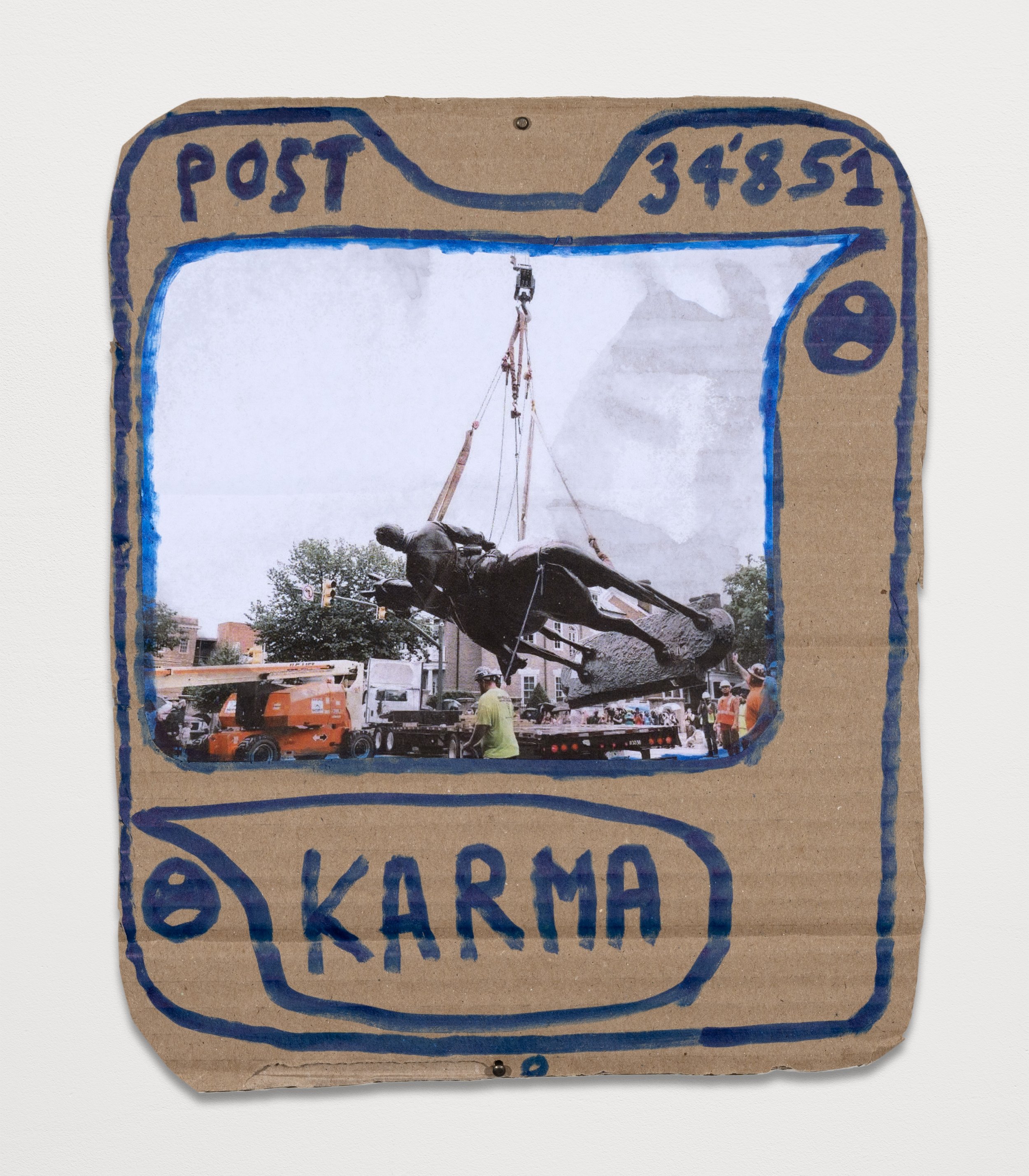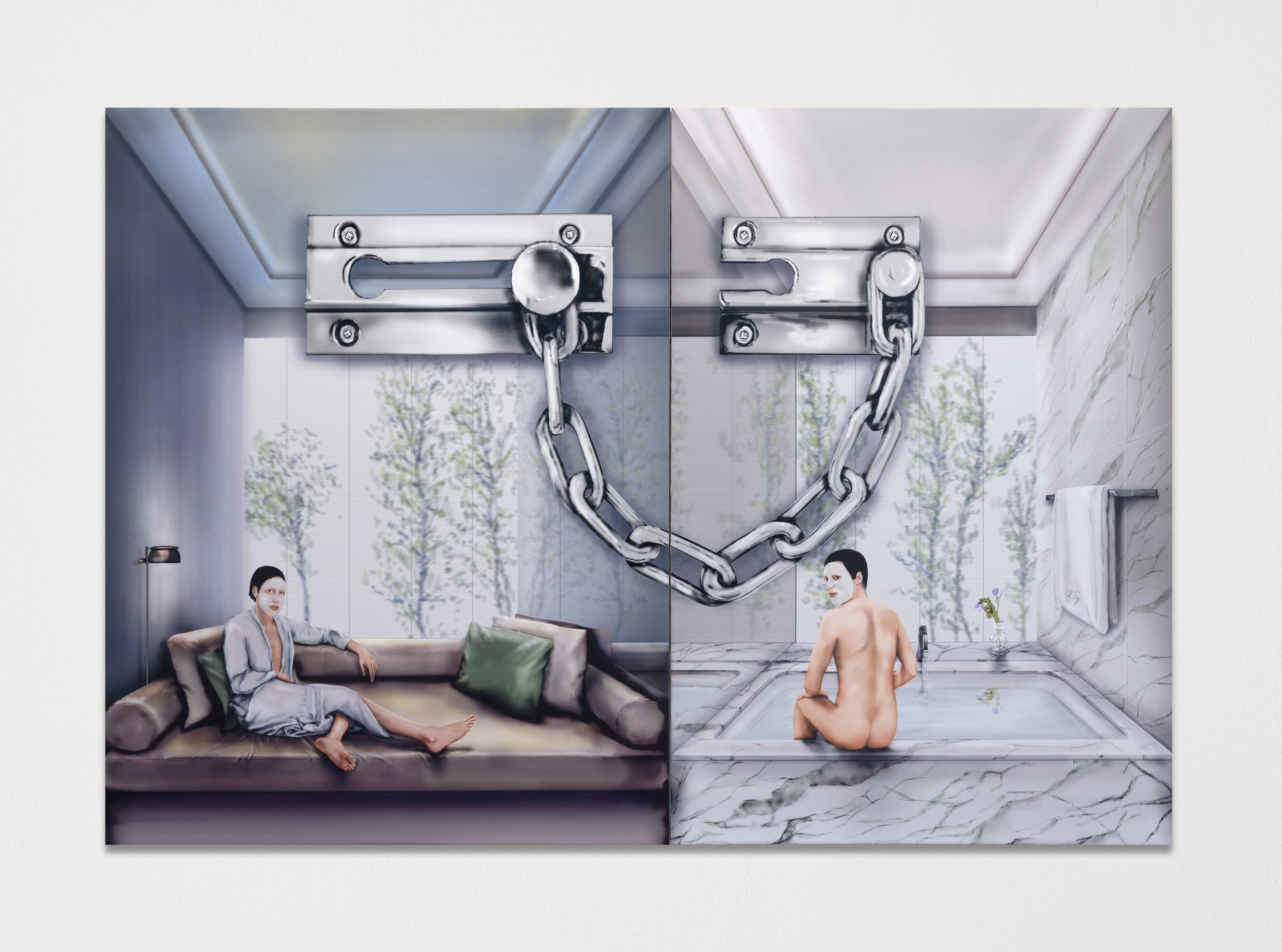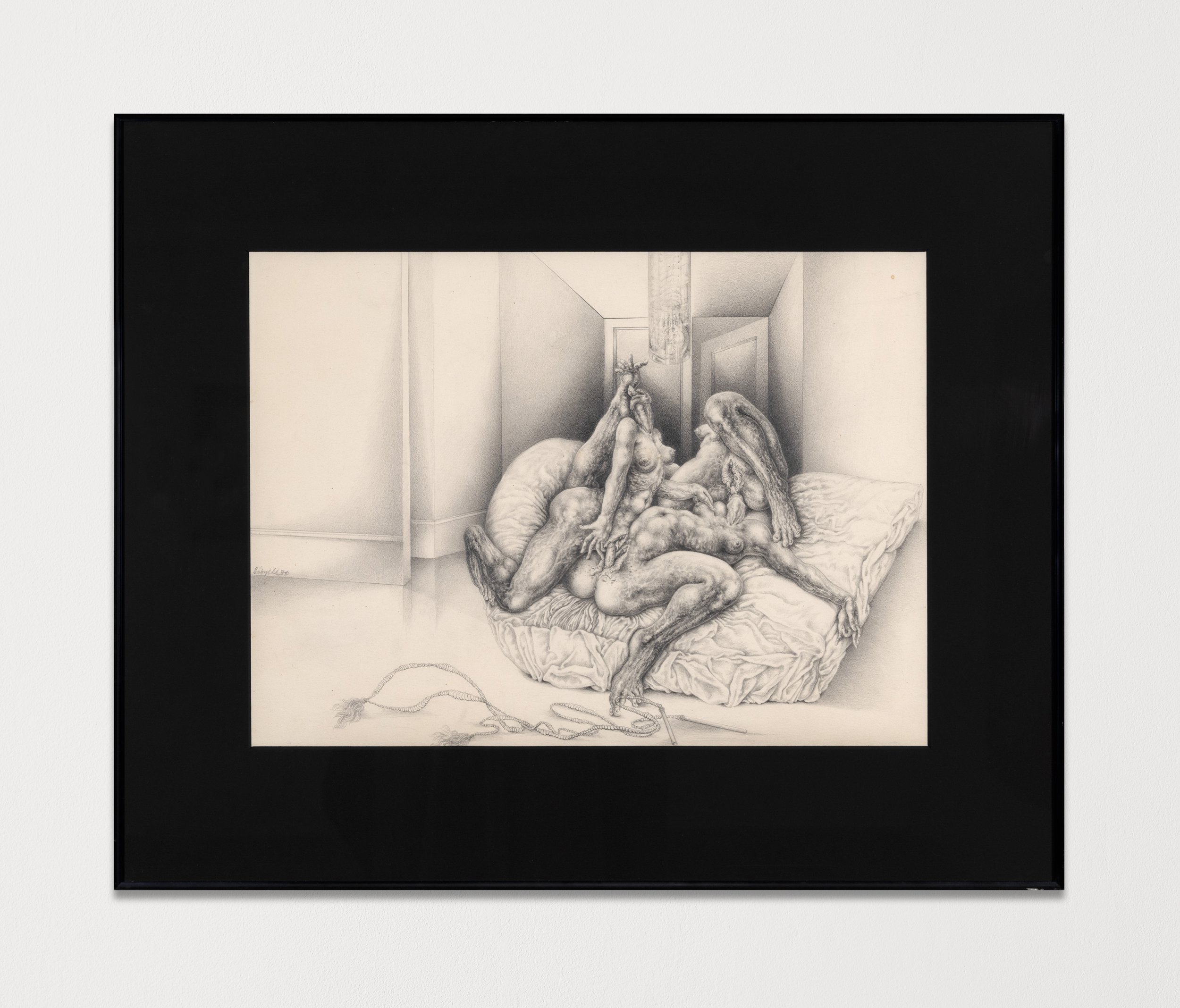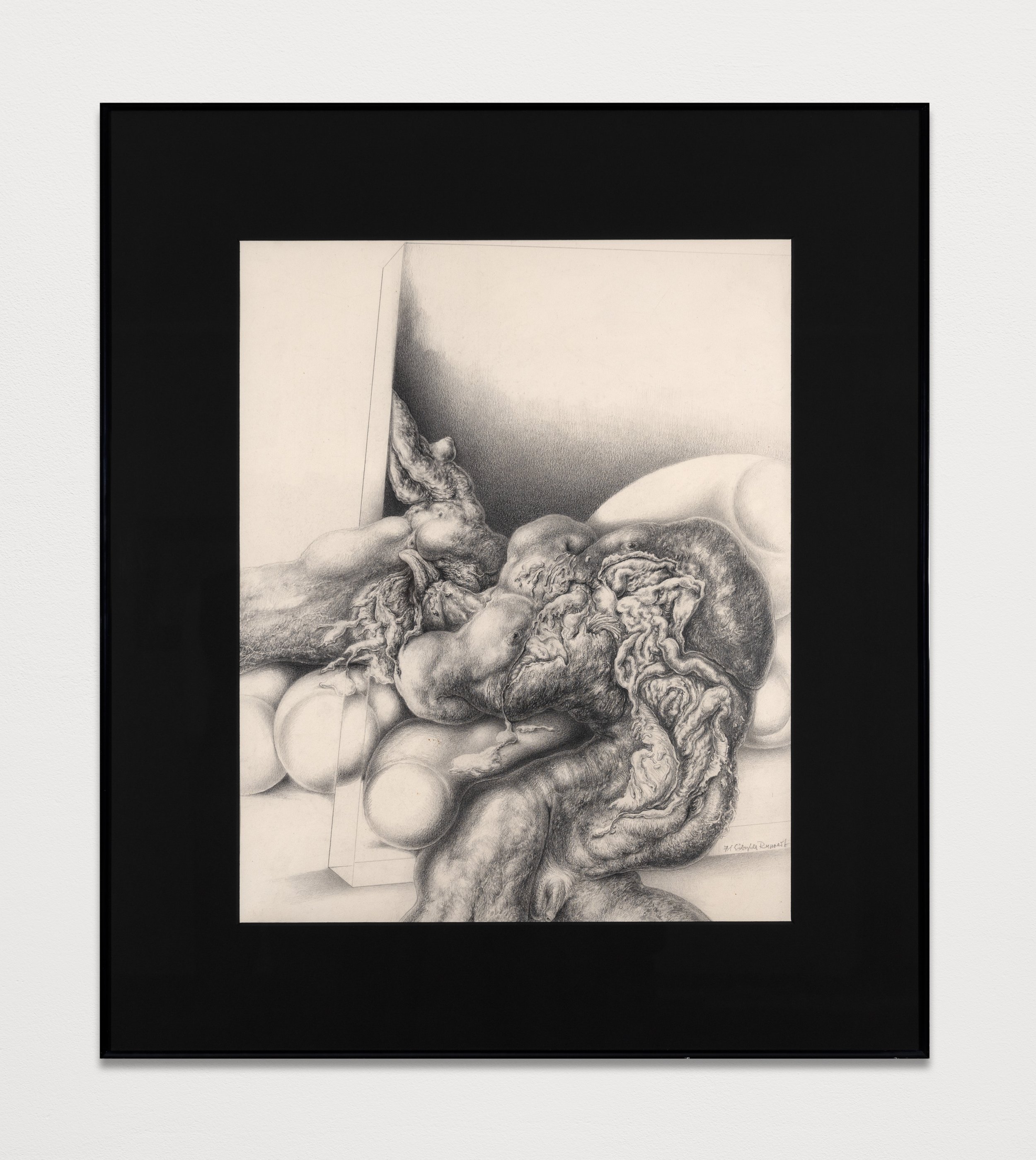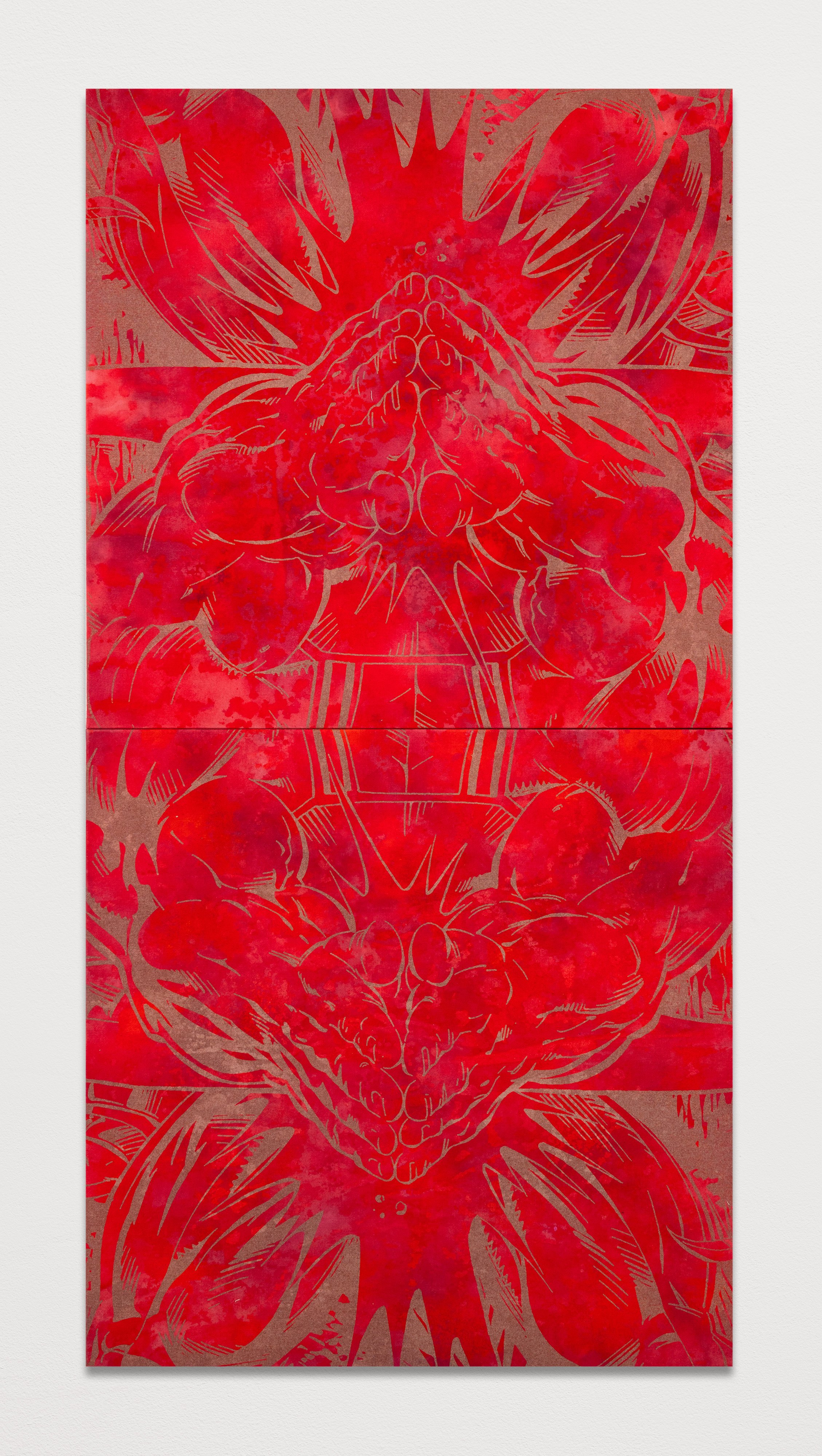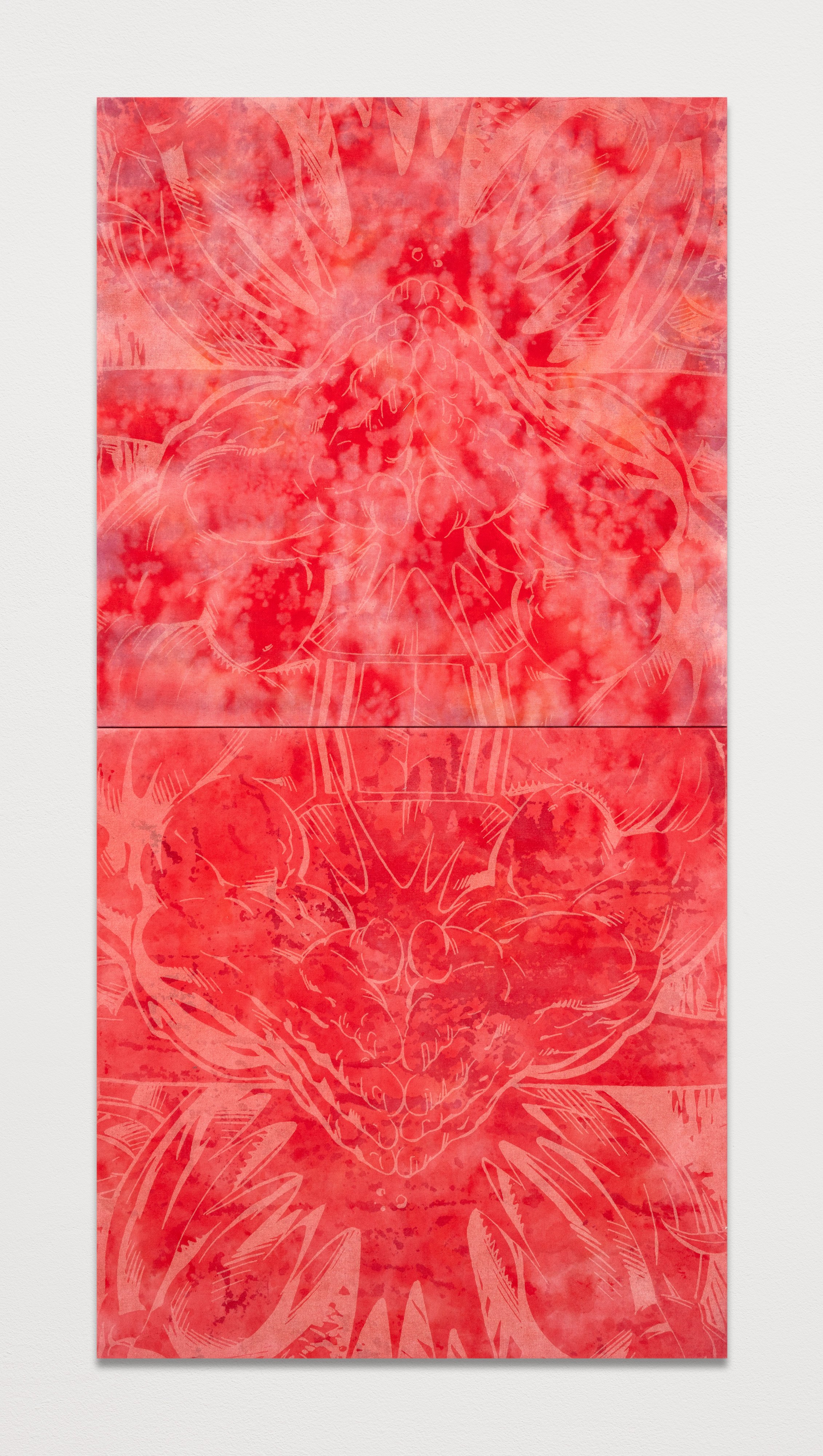«There I lost myself, I lost myself»
with works by Mitchell Anderson, Louisa Gagliardi, Thomas Hirschhorn, PRICE and Sibylle Ruppert.
1 June — 27 July, 2024

Blue Velvet ist excited to announce «There I lost myself, I lost myself», a group show with works by Mitchell Anderson, Louisa Gagliardi, Thomas Hirschhorn, PRICE and Sibylle Ruppert.
THERE I LOST MYSELF, I LOST MYSELF
“This is what you’ll get when you mess with us...” plays on a loop in my head. The karma police suggest to me that this is what I should say to life or people after receiving the umpteenth slap in the face. But can we be the karma police? For ourselves and for others I mean. I try to push those verses out of my head but when trauma resurfaces it is complicated, the song resumes and reminds me that after all, karma is nothing more than a sequence between cause and effect. Whether it has noble, neglected, happy or painful matrices, what comes back to us cyclically after an event has a melancholic bittersweet flavor. Karma is an echo. A powerful one, like that of the Ear of Dionysus that amplifies sounds up to sixteen times.
Cancel culture is also relevant to karma. This amplified sense of social justice is the cause-and-effect of a social, cultural and technological phenomenon that too often expresses itself aggressively and violently and works through denial and erasure. We have seen statues destroyed, defaced, removed, replaced; public places rethought to accommodate more horizontal works, which would like to stand in antithesis to the model of the celebratory monument on plinth to which we have been accustomed. We have seen them almost entirely from our smartphones because the phenomenon reached its peak after the Floyd case, and a pandemic forced us to spend long periods at home experiencing public space obsessively through those small screens.
Seeing those images again today, cartooned and framed with rough cardboard on ordinary white A4 sheets, looks almost anachronistic. Thomas Hirschhorn’s new series of works (A4 in fact) entitled KARMA (all 2024) is an echo to that acme moment in world cultural history, almost aped, and (already) tremendously distant. It doesn’t matter what statues they are; in some cases, they are unrecognizable. The question is, with what eyes do we look at these images today? With the same ones with which we would look at the images of Abu Ghraib, I would dare to guess. The toxic sequencing of cultural phenomena is what most characterizes us.
There is an anomalous aggressiveness mixed with nostalgia at this point of the 21st Century, almost a quarter of the way in. I feel it, it is tangible, just like those verses which I still feel. Can the karma police get things wrong? Probably only in the effect part of the cause-and-effect sequence, as this is the part of that sequence which is uncontrollable. Traumas suffered during childhood have materialized themselves into Sybille Ruppert’s subhuman and monstrously surrealist bodies, inhabiting and infecting them irreversibly. The five drawings we see here from the Seventies, which have not been shown for at least fifty years, represent those traumas viscerally, emphasizing human entrails to the point of almost freezing Ruppert’s mastery of portraying anatomy. The rawest violence consumed by charcoal on paper is the explosive Biomech of the 1970s’.
Nowadays this violence is latent, manifested by excess and sometimes by opposites, as in Mitchell Anderson’s abstractions that hint at more cartooned anatomies, or ambiguous interpersonal bonds poised between good and bad. In these layers of gouache on raw canvas, using invisible anti-counterfeit pigments, color comes together through dispersion. In contrast, nothing is dispersed in Louisa Gagliardi’s sleek surfaces, achieved by combining digital imaging processes with hand interventions, and still stressing the combination of nail polish and gel medium that has made these milky PVC surfaces so typical of her practice. The diptych Visitors (2024) shows two interior environments that are different but mirror-like in composition. It freezes the two human figures in the process of performing purely domestic actions, freezing them in time as well. In their banality they are such nostalgic and opaque figures. Yet, that detail in the right diptych, namely the initials L.G. embroidered on the towel, reminds us that a residue of humanity endures.
Like the essence of a fragrance that remains inside an old bottle, these are infinitely small things, which is why they are so human. And tremendously melancholic. The shape of PRICE’s oversized copper bottle evokes an essence without containing it. Although inspired by the well-known Fracas fragrance of 1948, no one can really link that shape to that moment of aesthetic-social renewal typical of the post-World War II period also made through new essences. Untitled (Flacon 1) (2024) materializes an absence that smells of nostalgia. It embodies a latent melancholy, for a smell that does not belong to us, yet is so familiar. As is this darkness that exudes the entire exhibition. In any case, the karma police always do a good job.
Eleonora Milani
Thomas Hirschhorn Post (KARMA 1), 2024 Cardboard, print and felt pencil 28 x 24 cm
Thomas Hirschhorn Post (KARMA 4), 2024 Cardboard, print and felt pencil 30 x 24 cm
Louisa Gagliardi Visitors, 2024 Nail polish, gel medium, ink on PVC 170 x 246,5 cm (in two parts)
PRICE Untitled (Flacon I), 2024 copper 30 x 25 x 15 cm
PRICE Untitled (Flacon II), 2024 copper 35 x 25 x 15 cm
Sibylle Ruppert Untitled, 1970 pencil on paper 30.5 x 42 cm
Sibylle Ruppert Untitled, 1971 pencil on paper 42 x 34 cm
Mitchell Anderson Answered Prayers, 2024 Gouache and security pigments on raw canvas 140 x 70 cm (in two parts)
Mitchell Anderson Answered Prayers, 2024 Gouache and security pigments on raw canvas 140 x 70 cm (in two parts)






